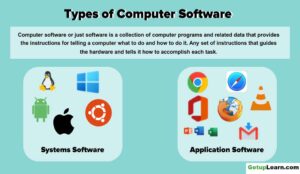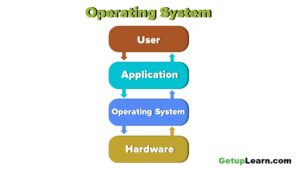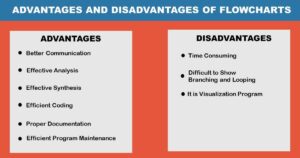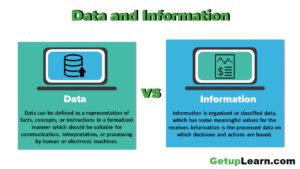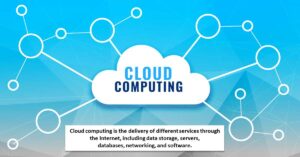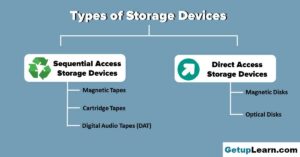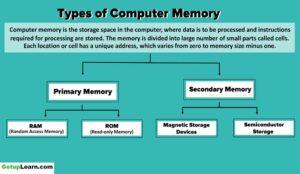Table of Contents
What is Microprocessor?
Evolution of microprocessors has turned into the brain of millions of gadgets since the year 1971 i.e. devoid of processors these wonderful innovations of millions of gadgets would have not been possible. Now come have a look at the gadgets in which the CPU are playing an imperative role for more than 40 long years.
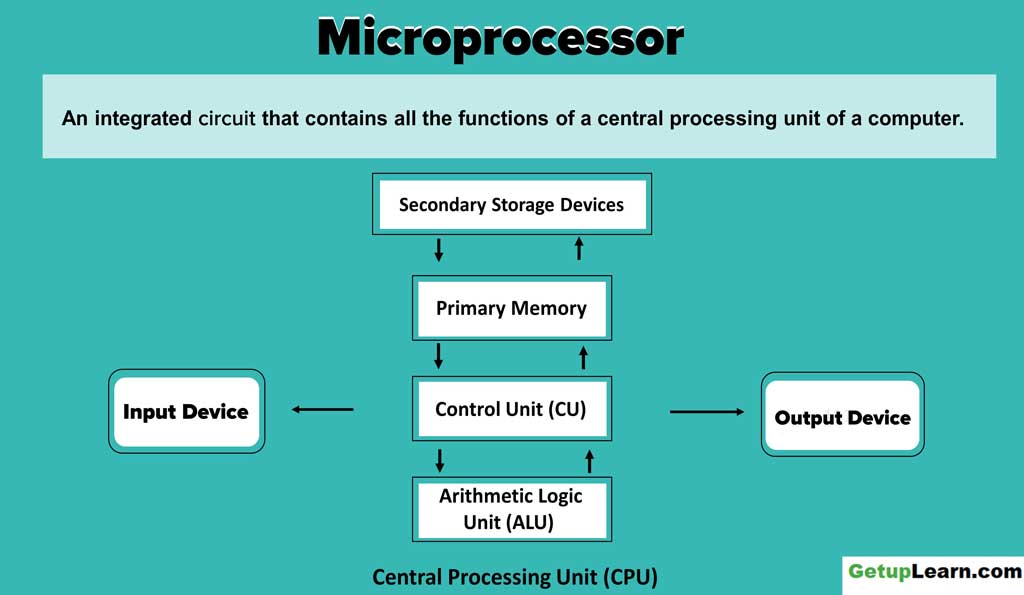
Table of Contents
A microprocessor is an important part of the computer. Without it, the computer is totally useless. It is a chip that has all the functions of the CPU of a computer. The microprocessor has the following functions of data storage, interaction with other peripheral devices, and other time-related functions.
Evolution of Microprocessor
Like evolution of human, from ape to well-developed, educated, gentleman; computer processors also have gone through enormous changes during its journey from 1971 till 2013 and it is expected that the advancement in this field will shoot like a rocket in the coming future.
Servers, workstations, etc. are used in Seismic Data Processing. While designing any processors some things are always focused on – a) Small Size b) High-Speed c) Better Performance and efficiency c) Low Power consumption, in turn, low heat dissipation. Overall Seismic data processing is a highly CPU (Central Processing Unit) and GPU (Graphics Processing Unit) intensive job.
These are some examples of the evolution of microprocessors:
-
Business Calculator: A business calculator was invented in the year 1971. The Unicom 141P business calculator was out of the foremost gadgets that feature a microprocessor.
-
Commodore PET: The PET was invented in the year 1971 and is broadly recognized as the primary all-in-one home computer.
-
Washing Machine: The foremost microchip-controlled washing machines were launched in the year 1977 and gave a bang to the market, showcasing the varied usages of innovative technology.
-
Arcade Mania in the year 1980: Namco pioneered Pac-Man in the walkways of the Unite States and ignited a new trend.
-
Osborne 1 Laptop: With five screens and 10.7kgs of weight, Osborne 1 Laptop was invented in the year 1981. It actually was the great grand-father of most modern laptops.
-
Nintendo NES: Consoles revitalized the gaming industry in the year 1986 such as Nintendo Entertainment System.
- Computing Democratized: Personal & business computing blasted with a broad variety of laptops, desktops & even early tabs. These inventions came up in the year 1991.
Types of Microprocessors
There are basically 5 types of microprocessors namely:
- Complex Instruction Set Microprocessors
- Reduced Instruction Set Microprocessor
- Superscalar Processors
- Application Specific Integrated Circuit
- Digital Signal Multiprocessors
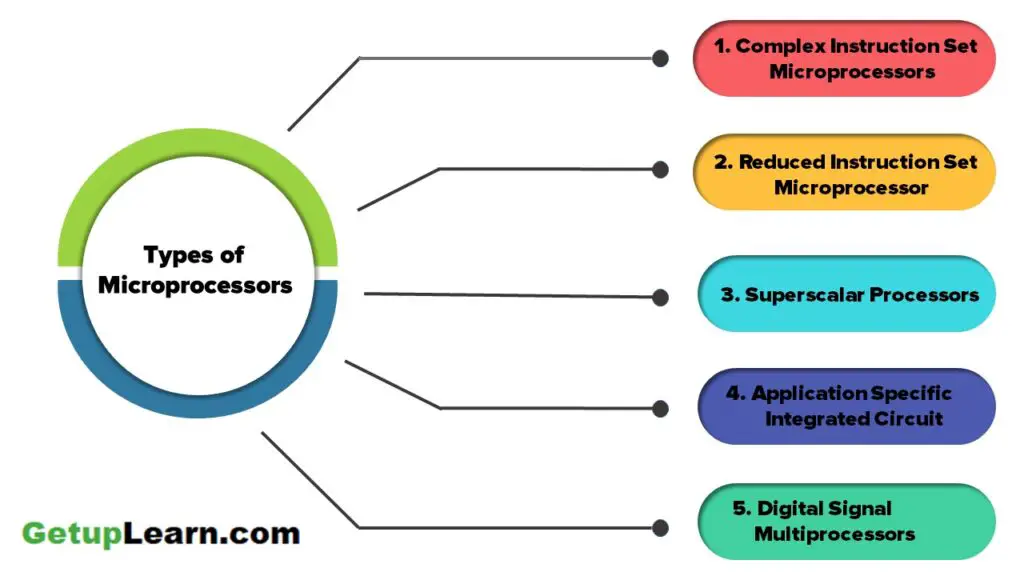
Complex Instruction Set Microprocessors
They are also called CISM in short and they categorize a microprocessor in which orders can be executed together along with other low-level activities. It mainly performs the task of uploading, downloading, and recalling data into and from the memory card. Apart from that it also does complex mathematical calculations within a single command.
Reduced Instruction Set Microprocessor
This processor is also called RISC. These kinds of chips are made according to the function in which the microprocessor can carry out small things within a particular command. In this way it completes more commands at a faster rate.
Superscalar Processors
Superscalar Processors are processor that copies the hardware on the microprocessor for performing numerous tasks at a time. They can be used for arithmetic and as multipliers. They have several operational units and thus carry out more than one command by constantly transmitting various instructions to the superfluous operational units inside the processor.
Application Specific Integrated Circuit
This processor is also known as ASIC. They are used for specific purposes that comprise automotive emissions control or personal digital assistants’ computer. This kind of processor is made with a proper specification but apart from that, it can also be made using off-the-shelf gears.
Digital Signal Multiprocessors
Also called DSPs, these are used for encoding and decoding videos or to convert the digital and video to analog and analog to digital. They need a microprocessor that is excellent in mathematical calculations. The chips of this processor are employed in SONAR, RADAR, home theatre audio gears, Mobile phones, and TV set-top boxes.
Features of Microprocessor
These are features of microprocessor that we discuss below:

External and Internal Data Bus
Most initial microprocessors could handle information only in 8 bits. As the width of the data bus increases, it determines the amount of information that can be moved in and out in a single operation. Apart from that it also states the number of instructions and numbers that can be used.
Also, the width of the internal bus and storage area differs from the external bus. Thus it differs from company to company. However, the Pentium processors have an external 64-bit data bus.
Cache Memory
When the speed of the processor increases the RAM finds it difficult to withstand it. Thus to minimize the size and the cost, RAM uses dynamic RAM which is faster on one hand while on the other very expensive. Thus it is used less for the temporary storage of files on the microprocessor this is called cache memory.
It is also called high-speed memory and is operated by a cache controller that identifies which data and instruction would be required for the next and accordingly loads it into the cache.
Speed of Clock
The oscillator that is fixed above the motherboard generates a number of electronic pulses that are used by the computer to synchronize operations. The change in the signal from positive to negative and vice versa is a cycle and thus the amount of cycle per second is calculated in hertz. The processor’s speed is generally the multiple of the external bus.
MIPS
A microprocessor generally requires a 10 clocks cycle to complete a single instruction. Also, the speed of the clock does not relate directly to the speed at which the CPU processes the instructions. To measure more than one instruction at a time modern processors have multiple pipelines.
However, apart from this, a more accurate way to measure the speed of the processor is with the help of MIPS (Millions of instructions per second).
Power Consumption
Power consumption is also a way of measuring the performance of the microprocessor. The formula for this is volts X Amps = watts. If the power consumes id much then it is given as heat and if there is low consumption it helps in increasing the battery life of notebook computers.
FAQ About Evolution of Microprocessor
What is evolution of microprocessor?
What are the features of microprocessor?
1.External and Internal Data Bus
2.Cache Memory
3.Speed of Clock
4. MIPS
5.Power Consumption

